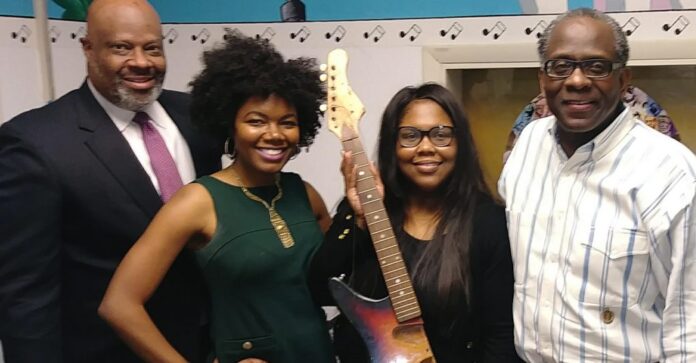
By Stacy M. Brown, NNPA Newswire Senior National Correspondent
From the hymns of slaves in the 17th and 18th centuries to hip-hop artists’ powerful message in the 20th and 21st centuries, African American artists have created and influenced generations of music lovers.
When Elvis Presley sang “Hound Dog,” he knew he had to pay homage to the African American Blues Legend Big Mama Thornton, who did it first – and better.
“A lot of people seem to think I started this business,” Elvis famously remarked.
“But rock ‘n’ roll was here a long time before I came along. Nobody can sing that kind of music like colored people. Let’s face it: I can’t sing like Fats Domino can. I know that.”
From rock and roll to blues, jazz, and hip-hop, music is as much the African American way of life as the afro was Black people’s style in the 1970s.
Finally honoring that history, the National Museum of African American Music (NMAAM) has opened in Nashville, Tenn.
According to a news release, it’s the only museum dedicated to preserving and celebrating the many music genres created, influenced, and inspired by African Americans.
The 56,000-square-foot institution contains more than 1,500 artifacts, objects, memorabilia, and clothing from Black artists.
Complete with state-of-the-art technology, the museum contains seven galleries.
Each is designed to share a different narrative and a unique perspective on Black music and history.
“NMAAM is complete,” NMAAM President and CEO H. Beecher Hicks III declared in a news release. On Feb. 23, Hicks appeared on the National Newspaper Publishers Association’s “Let It Be Known, Breaking News” broadcast to share insights on the new mixed-use downtown development at Fifth and Broadway.
“We have been preparing for this day for more than 20 years, but this museum has actually been more than 400 years in the making,” Hicks remarked.
“We look forward to welcoming music lovers from around the world to this magnificent cultural experience.”
Because of Covid-19, a limited number of visitors currently are allowed inside the museum.
Masks or face coverings are required for entrance, and guests are requested to remain socially distant, officials said.
Once the pandemic ends, tickets will be made available for purchase on the museum’s website for designated timeslots that allow for new tours to start every 30 minutes, museum officials determined.
Displays at the museum include interactive exhibits and such iconic items as “Lucille,” the guitar played by B.B. King, and a kimono worn by Alicia Keys.
Captured in a film overview at the museum’s “Roots Theater,” are the traditions of West and Central African cultures before slavery.
The Rivers of Rhythm Pathways, the “central spine of the museum experience that features touch panel interactives and an animated timeline that links American history and American music history,” officials described on the museum’s website.
A “Wade in the Water” gallery may prove popular among visitors as it explores African hymns.
The gallery connects African cultures’ religious music and later African American spirituals and hymns, including highlighting Mahalia Jackson, Shirley Caesar, Thomas Dorsey, and others.
The “Love Supreme” gallery dives deep into the history of jazz and explores the careers of legends like Ella Fitzgerald, Duke Ellington, John Coltrane, and others.
The “One Nation Under a Grove” gallery relays Motown Records and Soul Train’s stories, while “The Message” gallery explains the origins of hip hop.
“We hope visitors will enjoy learning about the expansive roster of ground-breaking artists who have influenced some of today’s biggest hit-makers,” said Allen Schrott, senior director of Music Products for TiVo/Xperi, a museum partner.
For more details about the museum, visit www.nmaam.org.
To view the full interview with Hicks, click here.


